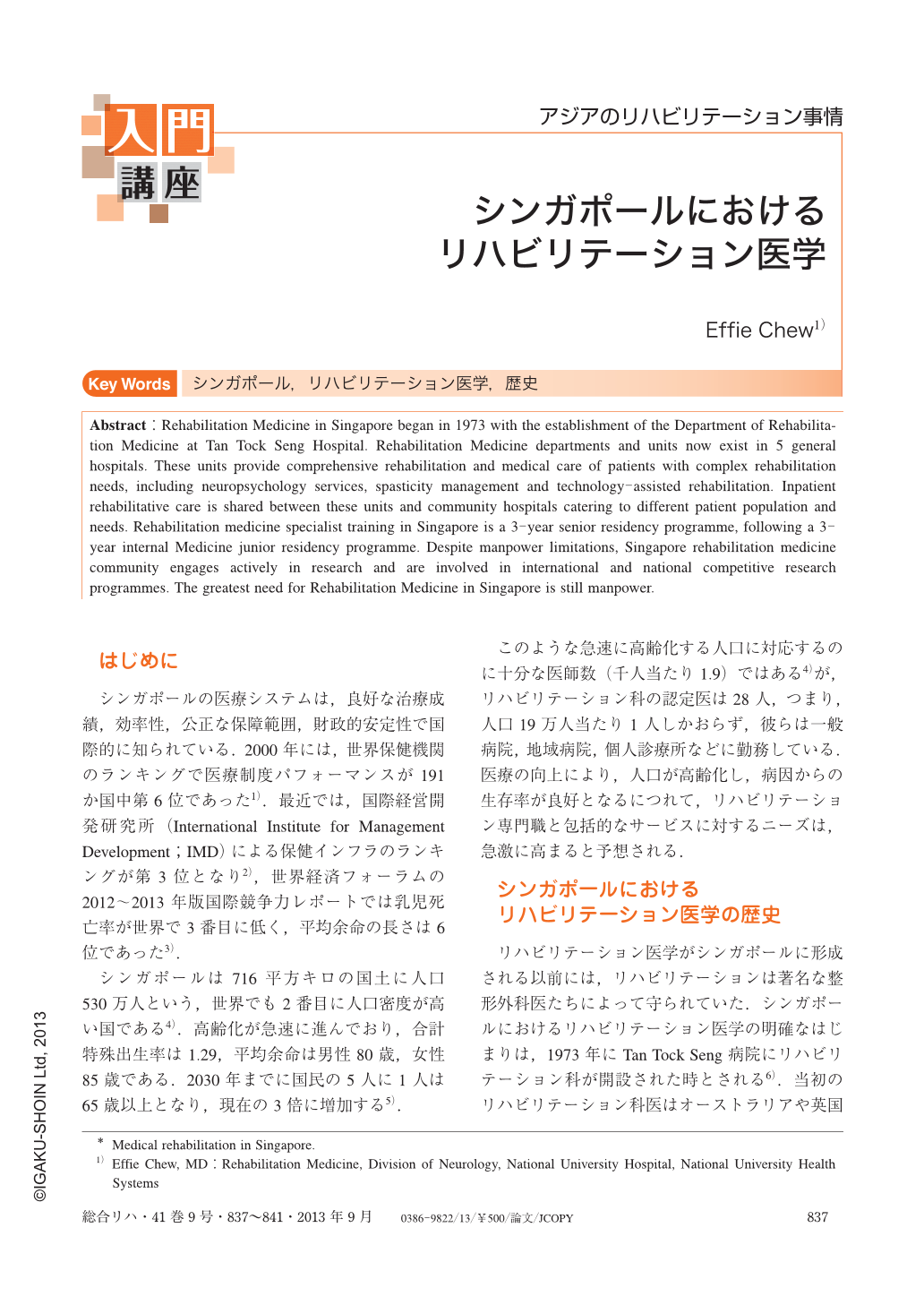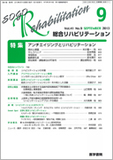Japanese
English
- 有料閲覧
- Abstract 文献概要
- 1ページ目 Look Inside
- 参考文献 Reference
はじめに
シンガポールの医療システムは,良好な治療成績,効率性,公正な保障範囲,財政的安定性で国際的に知られている.2000年には,世界保健機関のランキングで医療制度パフォーマンスが191か国中第6位であった1).最近では,国際経営開発研究所(International Institute for Management Development;IMD)による保健インフラのランキングが第3位となり2),世界経済フォーラムの2012~2013年版国際競争力レポートでは乳児死亡率が世界で3番目に低く,平均余命の長さは6位であった3).
シンガポールは716平方キロの国土に人口530万人という,世界でも2番目に人口密度が高い国である4).高齢化が急速に進んでおり,合計特殊出生率は1.29,平均余命は男性80歳,女性85歳である.2030年までに国民の5人に1人は65歳以上となり,現在の3倍に増加する5).
このような急速に高齢化する人口に対応するのに十分な医師数(千人当たり1.9)ではある4)が,リハビリテーション科の認定医は28人,つまり,人口19万人当たり1人しかおらず,彼らは一般病院,地域病院,個人診療所などに勤務している.医療の向上により,人口が高齢化し,病因からの生存率が良好となるにつれて,リハビリテーション専門職と包括的なサービスに対するニーズは,急激に高まると予想される.
Abstract:Rehabilitation Medicine in Singapore began in 1973 with the establishment of the Department of Rehabilitation Medicine at Tan Tock Seng Hospital. Rehabilitation Medicine departments and units now exist in 5 general hospitals. These units provide comprehensive rehabilitation and medical care of patients with complex rehabilitation needs, including neuropsychology services, spasticity management and technology-assisted rehabilitation. Inpatient rehabilitative care is shared between these units and community hospitals catering to different patient population and needs. Rehabilitation medicine specialist training in Singapore is a 3-year senior residency programme, following a 3-year internal Medicine junior residency programme. Despite manpower limitations, Singapore rehabilitation medicine community engages actively in research and are involved in international and national competitive research programmes. The greatest need for Rehabilitation Medicine in Singapore is still manpower.

Copyright © 2013, Igaku-Shoin Ltd. All rights reserved.


